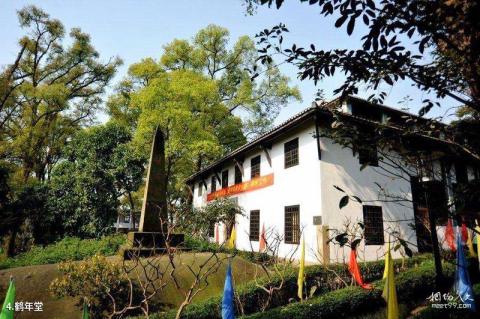
Introduction to Heniantang: Heniantang was built in 1928 in the style of a Roman opera house. It was donated by Chen Duxiu. In 1940, he lived and gave lectures here for three months. Heniantang is an earthen wood and masonry structure with a rectangular plane and a double-eaves roof. It has five rooms of 19.96 meters in width, nine rooms in depth, 36.83 meters in length, and a hall height of 12.98 meters. It has a foyer in the west, a lounge in the east, and a lounge in the middle. The seventh room is the auditorium, which is divided into upper and lower floors. The lower floor is the hall, and the upper floor is for participants to listen to lectures. The indoor structure is divided into two parts. The one at the west end is the foyer, with small doors on both sides to enter the hall. At the west end of the hall there is a stage imitating the Roman Opera House. During the Anti-Japanese War, famous professors, scholars, writers, writers, educators and celebrities from all walks of life such as Chen Duxiu, Chen Kezhong, Jiang Fucong, She Xueman, Cai Yuanpei and other celebrities gave lectures or speeches here to publicize the Anti-Japanese War. It was known as "the largest university in eastern Sichuan". Auditorium" is of extremely important significance to the study of education and anti-Japanese war culture in Jiangjin, Chongqing and even the whole country.
